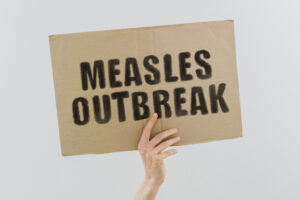2016. It was another eventful year for the food and beverage industry. From the farm – through manufacturers, processors, packers, distributors, transportation, foodservice and retail – to the table, the industry was affected by the first of the finally-effective FSMA rules and all that came with that, ongoing recalls and their ever-increasing impact, and consumer-driven initiatives and posting/tweeting/liking/pinning. And there were, thankfully, a few positive aspects of the year as well. Following is TAG’s Take on 2016’s Top 10 FSMA. With the seven major final rules finally published and the first compliance dates coming around, it seems as though many companies still don’t know if they fall under certain parts of the new FSMA ruling. This is especially evident with the Sanitary Transportation Rule, published in April. We have heard several people say that their company doesn’t fall under the rule, when, in fact, the company will be held to compliance. Even for those who understand that they must comply, it’s often a dilemma as to who is responsible for what and how to manage the responsibilities. From an enforcement perspective FDA was still ramping up in 2016 – but more to come on that in 2017. Environmental Testing and Whole Genome Sequencing. Another challenging aspect of the new FSMA rules is that of the Preventive Controls’ requirements for environmental monitoring programs (EMPs) and FDA’s related inspections. FDA is using WGS, should industry? If so, when? What should a facility do when the FDA identifies a resident organism? During 2016, EMPs became more of a factor beyond that of a written document and an ongoing activity. And we fully expect that these will be even more relevant in 2017 as companies large and small comply with new regulations. (For more on 2017, be sure to read next week’s article when we transition into TAG’s expectations for 2017.) Whole genome sequencing technology really took off in 2016 with the regulators who are now linking environmental positives in your plant from years back with illnesses occurring today. Such observations may not mean you were responsible but it does mean a visit from FDA with a bag of swabs to see if the strain is still there and if it is – watch out! USDA-Regulated Facilities. And it wasn’t just FDA facilities that faced new requirements. In finalizing its new federal standards to reduce Salmonella and Campylobacter in poultry, USDA also announced that it would begin posting information online about individual companies’ food safety performance. Additionally, the focus on antibiotic resistance took a global turn with global leaders meeting at the United Nations General Assembly in New York in September to commit to fighting antimicrobial resistance together, and a number of U.S. companies committing to producing or selling antibiotic-free meats in the coming years. Food Recall Dollars and Cells. The dollar-value consequences of recalls continued to be brought to light through the year, with 2016 being a game-changing year for the foodservice segment as the focus shifted to “How do we make sure we are not the next to be in the news?” If that weren’t enough, the year saw a spate of activity from the Department of Justice (DOJ) in regard to investigating food safety activity at a number of companies. It became very serious business and a trend that we don’t expect to slow down any time soon. The wave began with the PCA executive prison sentences and is continuing with the DeCoster jail sentence appeal for adulterated eggs, which could end up at the Supreme Court. Even small companies are feeling the effects, as DOJ’s involvement in a 2014 shut down of Roos Food in Delaware brought about the 2016 plea of guilty to the federal criminal misdemeanor of food adulteration and a $100,000 fine. No One Is Immune. It’s not just the facility where the contamination is detected that gets hit with recall impacts – a recall can impact the entire related supply chain. There were a number of smaller companies that were affected by a recall of a larger company. It shows that no one is immune from the effect of a recall with a huge corporate company; supply chain decisions apply across the board. And to bring FDA’s environmental testing back in the picture – major recalls occurred from FDA’s facility swabbing and testing that affected those downstream – from frozen vegetables and flour to powdered milk and sunflower seeds. The lesson: If you think that purchasing product from a large corporation means it will be safe, think again. That theory doesn’t necessarily hold up. The link can be broken anywhere in the supply chain, so you have to be always aware, continually monitor your options, and move quickly to assess your supply chain and take action when something is detected. A Decline in Self-Insurance. Because of all this, self-insuring became much rarer as the effects of a full-blown recall were shown to have devastating financial and litigation consequences. Even corporations with deep pockets need to take a serious look at recall insurance. We’ve heard comments such as “They won’t have to worry about a recall because they have deep pockets.” But, in today’s world, deep pockets can’t save a company’s brand name, and there can’t be many companies who can actually afford the millions in lost revenue that can come with a huge recall. Whether or not the increase in recalls actually equates to worsening food safety, or simply the ability detect ever lower, the escalation of recalls with global impact is greater than ever before, so insurance is not just prudent, it’s vital Media and Social Media. Negative media coverage has always been an issue for industry, but the increased social media of recent years continues to add its impact. It isn’t simply a fad as some people suspected, it’s here to stay. So it is critical that you make sure your story is a good one, and that you get your story out there yourself, not only for FDA and your customers, but also to counter would-be ‘haters’ on Facebook, Twitter, Instagram … where things can go to pieces fast. When Myspace started in 2003, everyone said it wouldn’t last. It didn’t – it was, instead, overtaken by the more sophisticated Facebook which has continued to evolve like a tween into a young adult. The fastest growing demographic on Facebook now is women 50+ – sometimes just to see pictures of their grandchildren, but often to be informed of news items and friends’ posts with their versions of news. This is important, because this demographic is also the biggest purchaser of food and everything else. With Facebookers now able to go live and be interactive, the story can change minute to minute – so if a negative story about your company is circulated, you have to able to respond live, fast, in a concerned and accurate manner. If you have a company Facebook page, you better be sure it’s monitored all the time and updated frequently. Twitter is also seen as credible, so, again, if you use it, watch it and react accordingly. Information moves at the speed of a click, so be ready get your story together and get ‘fans’ to support you in case the worse happens. Public interest in food safety issues has increased, and today’s consumers have access to more information – and misinformation. Without food science and nutrition science knowledge, consumers still make most of their food decisions based on their perceived truths, and those perceived truths are highly influenced by the media – both traditional and social media GMOs. This couldn’t be a Top 10 of 2016 without mentioning GMOs. The Congressional passage and Presidential signature on the federal GMO bill not only pushed to the onus to USDA to develop a national standard for GMO labeling, but also pre-empted and barred any state regulations for GMO labeling. Although the regulation will certainly impact the food industry, it isn’t likely to see much in the very near future, as USDA has two years to create the program, considering consistency with that of the Organic Foods Production Act. Additionally the impact will be significantly less that what could have resulted from “a patchwork of state regulations” and the much-more restrictive labeling requirements of those of states such as Vermont, whose law was pre-empted Plant-Based Diets and Vegan Food. Although the federal GMO law may somewhat lessen the push to natural, the continuing consumer trends for vegan, plant-based, and other alternative diets took a huge shift in 2016 to become fully mainstream. One such provider, Follow Your Heart, is expected to turn over $40 to $50 million this financial year; another, Soylent, is unable to produce enough product to supply its customers. Clearly, “Food 2.0” – whether it be vegan food, meat and dairy alternatives or bioengineered algae – is no longer counterculture. This is important because most of these foods include mostly raw and minimally processed foods that can pose a higher food safety risk. While consumers are urged to eat more fruits and vegetables, these same foods are presenting significant foodborne illness risks. So, consumers are demanding more plant-based food alternatives And, Finally, the Positive. Although the industry is confronting challenges with the new regulations and consumer trends, there are positives to be noted. FSMA is bringing out the “Big Picture” of food safety. In the past, many companies thought HACCP was all they needed to produce a safe product. You could say they had blinders on. HACCP only brought companies so far. FSMA is taking companies to that next, improved level. With all the intricacies involved in becoming compliant with FSMA, and having a PCQI write or oversee the writing of a Food Safety Plan, many companies are now realizing the increased capability they have in preventing a food safety concern. That is the whole idea behind FSMA – prevention of an event instead of reaction to an event. We are seeing companies we work with, large and small, taking the additional proactive FSMA measures that HACCP did not take into account. The result is a safer food product produced from those companies, and ultimately increased safety for the consumer. No product is 100% risk free. But with FSMA being applied appropriately, the risk is going down – a very positive note indeed. Meeting all the challenges of the Top 9, and even ensuring the positive outcome of #10, doesn’t come easy. It all takes time, resources, upper management dedication, training, and continual follow up. Even with full FSMA compliance, fast and thorough recall programs, GMO labeling, and positive social media communication, incidents will occur. But it is how prepared each company is to react, limit, and learn to prevent repeating of incidents, that will reduce issues and their impact on consumers, the company itself, and the industry as a whole. The reward is a safer product, and that is a goal that all of us at TAG want to help our customers achieve. About The Acheson Group (TAG) Led by Former FDA Associate Commissioner for Foods Dr. David Acheson, TAG is a food safety consulting group that provides guidance and expertise worldwide for companies throughout the food supply chain. With in-depth industry knowledge combined with real-world experience, TAG’s team of food safety experts help companies more effectively mitigate risk, improve operational efficiencies, and ensure regulatory and standards compliance. www.AchesonGroup.com





